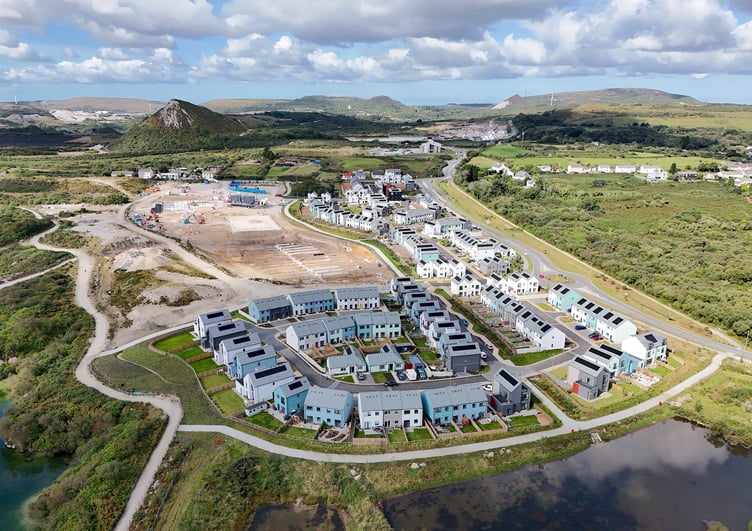THE landscape around the iconic Sky Tip above St Austell is continuing to evolve.
More houses and a school are taking shape as the West Carclaze Garden Village develops further in the post-industrial terrain of pits, lakes and plateaus.
New houses are being built to the north of the pyramid-like china clay waste landmark while the Sky Academy and Eden Project Nursery building, a play area and a sports pitch are being provided to the east beside the houses built in the first phase of the garden village development.
The plan is also to have 350 acres in the area dedicated to a new country park with a mix of tended areas and more wild areas. A connecting spine will link lakes and the Sky Tip with other parts of the development.
The Sky Tip at the former Great Treverbyn clay works site was once one of many such conical waste tips forming part of the so-called Cornish Alps.
Over the years, the waste sand from the china clay production processes was dumped on the tips which grew and grew in size.
Few now remain but, as a surviving mining relic, the Sky Tip, which dominates the ridge behind St Austell, has become a symbol of the town’s identity, pointing to the area’s incredible industrial heritage and the hard graft of china clay workers across the centuries.
Scenes around the iconic Sky Tip above St Austell. Aerial picture and snow pictures by Paul Williams, other pictures by Andrew Townsend.
The Great Treverbyn China Clay Company had begun working the Great Carluddon site in the early part of the 20th century, using steam power before switching to electricity.
The last sand that made up the Sky Tip is said to have been deposited around the middle of the 20th century, though further sand was subsequently placed to the side of the main mound.
Today the old Sky Tip watches on with modern change all around.





Comments
This article has no comments yet. Be the first to leave a comment.